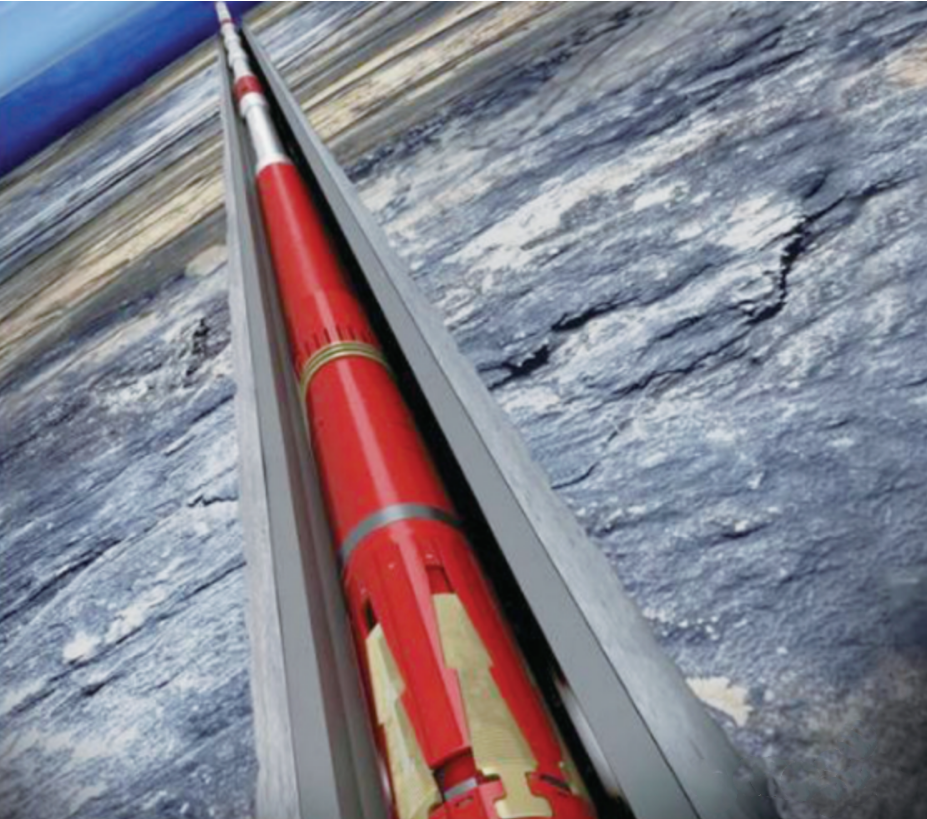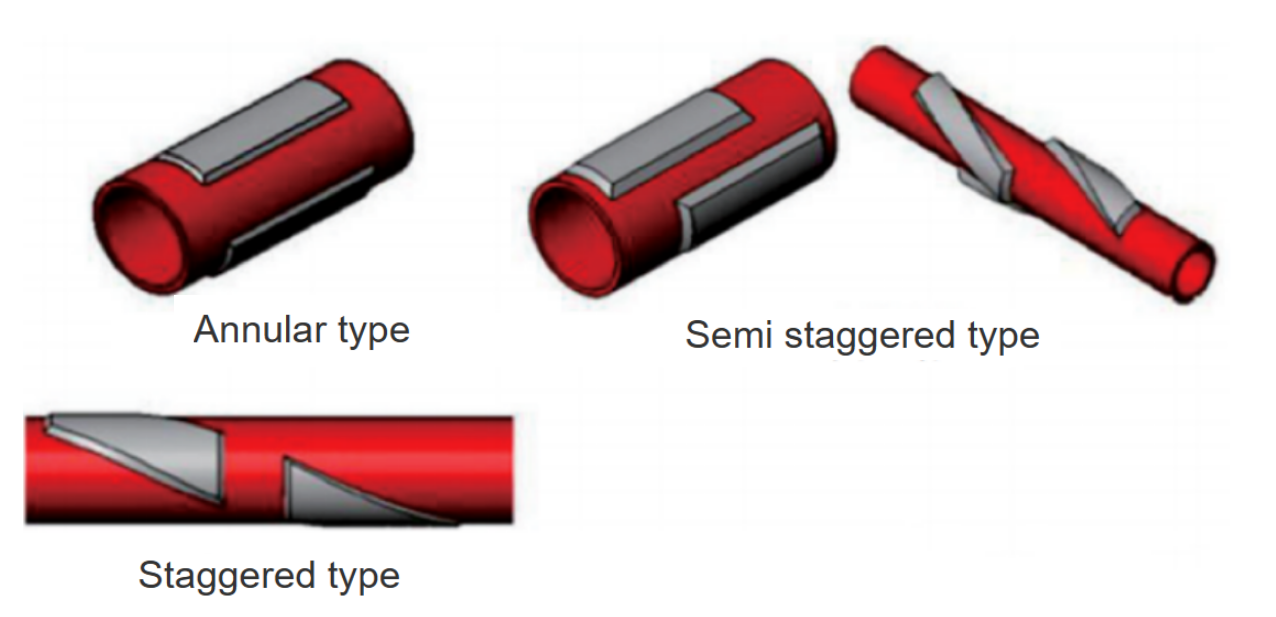Case Studies
Case Studies
- The Application Prospects of DeepSeek Large Model in Petroleum Engineering(Part 1)
- The Application Prospects of DeepSeek Large Model in Petroleum Engineering(Part 2)
- Development and Performance Evaluation of Efficient Asphalt Dispersant (Part 1)
- Development and Performance Evaluation of Efficient Asphalt Dispersant (Part 2)
- Development and Performance Evaluation of Efficient Asphalt Dispersant (Part 3)
- Research and Application Status of Drilling Fluid Plugging Materials (Part 1)
- Research and Application Status of Drilling Fluid Plugging Materials (Part 2)
- Research and Application Status of Drilling Fluid Plugging Materials (Part 3)
- Application and Exploration of Intelligent Technology for carbon dioxide transportation pipelines under the dual carbon background(Part 1)
- Application and Exploration of Intelligent Technology for carbon dioxide transportation pipelines under the dual carbon background(Part 2)
With the development of exploration and development towards deep and ultra deep layers, complex geological environments such as high temperature (190 ℃), high pressure (143 MPa), high sulfur content (up to 450 g/m3), ultra-high pressure saline water, ultra-deep (well depth 6000~8882 m), high steep (high steep structural formation dip angle 87 °), and extremely narrow (narrow pressure window 0.01~0.02 g/cm3) have become more common, posing greater challenges to cementing tools.
1. Liner Hanger
Compared with conventional oil and gas well liner cementing, deep and ultra deep wells require higher performance for liner hangers—
(1)The ability to withstand greater loads and meet deeper demands;
(2)It has stronger resistance to high temperature and high pressure;
(3)It is corrosion-resistant and able to adapt to changing environments;
(4) It has sufficient safety and reliability under high temperature and pressure conditions.
The SwageHammer integrated tail pipe hanger (as shown in Figure 1) from a foreign company, Weatherford, combines the advantages of conventional tail pipe hangers and expansion tail pipe hangers, greatly improving wellbore sealing performance. Its sealing ability for gas and liquid is reduced to 86.2 MPa at 204 ℃. The suspension bearing capacity of the Ф 244.5 mm ×Ф177.8 mm tail pipe hanger can reach about 320 tons, and has achieved good application results on site.

Drillquip's LS-15 tailpipe hanger is a typical non hydraulic cylinder fully sealed tailpipe hanger (see Figure 2).
Figure 2 LS-15 Fully sealed tailpipe hanger without hydraulic cylinder

The LS-15 tailpipe hanger adopts an integrated design of the top packer unit and hanger unit of the tail pipe, ensuring tool reliability while reducing processing costs. Its suspension unit also adopts a non powered hydraulic cylinder design, fundamentally eliminating internal and external connectivity, and its performance indicators are the same as the SwageHammer tailpipe suspension.
In response to development needs, domestic Chuanqing Drilling Company, Texas Continental Shelf Company, and Bohai Drilling Company have developed high-pressure sealed tail pipe hangers with a sealing pressure exceeding 70 MPa, meeting the American Petroleum Institute (API) V0 standard, and have been successfully applied in areas such as the South China Sea, Southwest China, Tarim, and Qinghai. In the application of Texas Continental Shelf Company's infinite cycle tail pipe hanger in Songke 2 well, the working position temperature of the tail pipe hanger is as high as 240 ℃; at Well Chuanshen 1, the bottom hole pressure reached 104 MPa and has been applied more than 180 times.
The sealed high-pressure liner hanger of Chuanqing Drilling Company has achieved a maximum internal pressure of 90 MPa for gas sealing and a maximum annular sealing capacity of 70 MPa. It has developed into a series of tools that can cover the needs of liner suspension cementing operations with pipe diameters ranging from 4 1/2 to 14 3/8 inches. The maximum casing depth can reach 8305 meters and the maximum wellbore temperature is nearly 200 ℃.
The nearly 10 unconventional high-temperature and high-pressure tail pipe hangers of Bohai Drilling Company have been applied 13 times in deep and ultra deep wells, with successful installation at all times. The installation point reaches a maximum depth of 6400 meters, the construction well depth reaches a maximum depth of 7640 meters, the maximum temperature resistance is 205 ℃, the maximum pressure resistance is 70 MPa, and the suspension capacity is 200 tons.
2. Graded Cement Injector
Halliburton and Weatherford have successively developed the Obex IsoLock sealing type grading hoop(Obex IsoLock Packer Col⁃lar)and SwageSet V0 level packed graded cementing tool(Swage⁃Set V0 Post Packoff Stage Tool), both of which can achieve V0 level sealing.
The SwageSet V0 Post Packoff Stage Tool adopts a mechanical sealing unit and a high-strength unidirectional slip structure, effectively preventing the movement of the sealing unit, enhancing sealing performance, with a maximum pressure capacity of up to 70 MPa, improving the reliability of graded cementing operations and the integrity of the pipe string. In order to adapt to the special wellbore structure and complex downhole conditions often encountered in deep and ultra deep well drilling in Xinjiang, Qinghai, and other regions, special specifications such as 14 3/8 inch, 11 3/4 inch, and 8 5/8 inch graded cement injectors have been formed in China, with a maximum size of 14 3/8 inch. The high-temperature and high-pressure gas sealed graded cement injector has a maximum pressure of 70 MPa and a temperature resistance of 200 ℃. The anti-corrosion graded cement injector can achieve single resistance to H2S, single resistance to CO2, and dual resistance to H2S/CO2.
3. Centralizer and Centralizer Joint
(1) Enlarged eye centralizer
In order to solve the problems of using conventional centralizers in the expanded wellbore section that cannot ensure the centering of the casing and the difficulty in improving the efficiency of cementing displacement, Weatherford Company has developed a downhole activated centralizer.
Based on the traditional braided centralizer, the centralizer bar is tied with a steel belt and an activated locking device before being lowered into the well, reducing the outer diameter to less than the inner diameter of the upper casing. After being lowered into the predetermined depth of the well, under the action of wellbore pressure, temperature, magnetic signals, or mud chemical properties, the locking device is activated to unlock, and the elastic strip restores the initial outer diameter, generating sufficient resetting force to ensure the centering effect of the casing.
However, this technology has certain limitations and has not been widely promoted and applied. Various domestic institutions have also conducted research on this type of technology, but currently it is only in the theoretical design stage and no related products have been formed.
(2) Narrow gap straightening short joint
To solve the problem of small wellbore to casing clearance and inability to use conventional centralizers in narrow gap wellbore structures, Halliburton Corporation has developed the Protech CRB centralizer (see Figure 3). The centralizer uses a proprietary bonding process to shape carbon fiber ceramic composite materials at any position of the casing string, and the size, shape, and position can be adjusted as needed.
This type of centralizer reduces the frictional resistance of the pipe string and increases the flow area at the centralizer position. It can be applied in conventional or small wellbore wells, especially in narrow gap wells, to improve the centering degree, displacement efficiency, and cementing quality of the pipe string.
Figure 3 Halliburton Protech CRB centralizer

There are two main technical solutions adopted in China, one is the hydraulic casing stabbing short joint (see Figure 4); The second is the rigid straightening short joint.
The former first runs into the well with a small outer diameter, and after the casing string is smoothly in place, the support strip and the centered casing are opened. However, there is a risk of the support strip being opened in advance, and due to the presence of inlet holes and seals in the structure, the integrity of the casing string will be affected; The latter involves directly milling or welding rigid straightening bars on the pipe body to achieve the effect of straightening. However, due to the form of short joints, the stiffness of the pipe string is increased, which affects the insertion of the pipe string and poses a risk of thread unsealing.
Figure 4 Domestic hydraulic casing stabbing short joint



